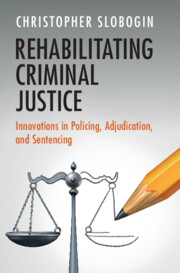Book contents
5 - Downsizing Pretrial Detention
from Part II - Adjudication
Published online by Cambridge University Press: 17 April 2025
Summary
Chapter 5 tackles what it calls the “travesty” of pretrial detention. In the past fifty years, an increased emphasis on detaining arrestees, not only for the traditional purpose of preventing flight but also to incapacitate those perceived to be dangerous, has led to a huge jump in jail populations. The result has been a mammoth increase in unnecessary confinements, disruption of families and jobs, and guilty pleas motivated solely by a desire for release. Some jurisdictions have attempted to mitigate these harmful effects by requiring the use of actuarial instruments to improve identification of those who are at risk of reoffending or failing to appear for trial. This chapter doubles down on that development, despite the controversies swirling around it. It proposes that under most circumstances, the results of well-validated risk assessment instruments should not only inform pretrial outcomes but dictate them, on the grounds that they are more likely to be accurate and less racially biased than risk assessments made by judges, as well as significantly more likely to lead to reduced pretrial detention rates if the “high risk” threshold is defined properly.
- Type
- Chapter
- Information
- Rehabilitating Criminal JusticeInnovations in Policing, Adjudication, and Sentencing, pp. 75 - 82Publisher: Cambridge University PressPrint publication year: 2025

